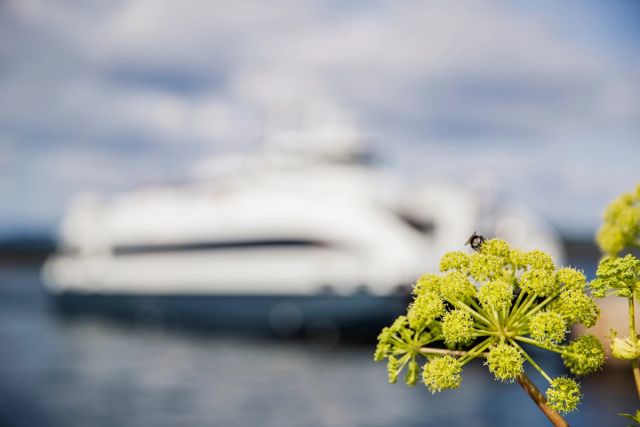Sustainability work

Why is sustainability important to Ruter?
Ruter manages an extensive travel service in the Oslo region, and is responsible for minimizing the climate impact. The best way to reduce pollution from road traffic is through traffic reduction measures – such as expanding public transport services and facilitating cyclists and pedestrians.
Sustainable mobility for all
Together with customers, owners, operators, and other partners, Ruter works to reduce private car use and make green mobility the preferred travel option for customers. We call it sustainable mobility freedom.
Local emissions on the decline
Since 2017, Ruter's buses and boats have gradually become electric. This has dramatically reduced local emissions and noise from the operation of public transport.
Transportation contributes not only to global greenhouse gas emissions, but it also affects the local environment. To improve local air quality and public health, Ruter is working to minimize emissions of NOx, hydrocarbons, particles, and microplastics from vehicles and vessels. We are also working to limit noise.
Learn more about how we work within each of these areas (only available in Norwegian).
How do we report on sustainability?
Since 2022, Ruter has been using the voluntary, international standard Global Reporting Initiative (GRI) for sustainability reporting. In 2025, we transitioned to the EU's new standard, enshrined in the Corporate Sustainability Reporting Directive (CSRD) – and in the Norwegian Accounting Act.
The EU directive (CSRD) is based on a broad concept of sustainability. Companies are required to report on three main areas:
- Environment: How the company affects the environment, including carbon footprint, resource consumption, pollution, and biodiversity.
- Social factors: How the company manages employees, human rights, labor conditions, customers, and corporate social responsibility.
- Corporate Governance: The company's management structure, ethical guidelines, transparency, supplier management, and corruption prevention.
Ruter must not only meet the reporting requirements of the EU's new sustainability directive. We view reporting as a catalyst for sustainability innovation – to fulfill our goal of providing sustainable mobility for everyone in Ruter's region.
Taxonomy
Ruter are covered by the EU's taxonomy regulation, a framework that defines which economic activities can be classified as sustainable within the EU. The purpose is to steer investments in a more sustainable direction.
Routes meet the taxonomy's requirements for a substantial contribution to mitigating climate change through:
- A primarily electric vehicle fleet – buses, cars, trams, subways, and boats
- All remaining fossil fuel buses meet the EURO VI standard, the strictest emission requirement standard for heavy-duty vehicles in the EU and EEA.